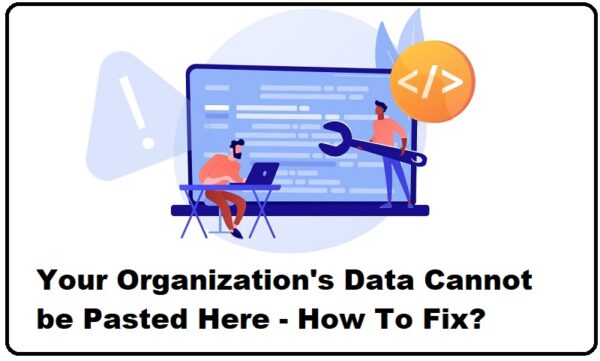The Universal Primary Health Care (PHC) Logistics Management Information System (UPLMIS) is a modern digital platform designed to enhance the management of healthcare commodities at the primary healthcare level. UPLMIS empowers healthcare providers to efficiently manage essential items such as drugs, vaccines, and medical supplies, thereby minimizing stockouts, wastage, and improving overall service delivery.
In this article, we will explore the UPLMIS registration and login processes, the benefits of the system, and how it simplifies healthcare supply chain management.
UPLMIS Registration Process:
The registration process for UPLMIS is simple and accessible to all primary healthcare facilities. To begin, visit the UPLMIS website and click on the “Register” button. You will then be prompted to complete a registration form, providing basic information such as the name and location of your facility, as well as contact details. Additionally, you will need to specify the types of drugs, vaccines, and medical supplies stocked at your facility.
Upon completing the registration form, you will receive a confirmation email containing a link to activate your account. Once activated, you can log in to the UPLMIS system and begin managing your healthcare commodities.
For laborers seeking registration on the UPBOCW portal, follow these steps:
- Visit the UPBOCW Official Website.
- Select the “Labor” option from the Menu Tab on the homepage.
- Choose the “Application/Modification for Labor Registration” option.
- Fill in all required details, including your Aadhaar card number, district selection, and mobile number.
- Enter your mobile number to receive an OTP (one-time password).
- Input the OTP in the designated space.
- Your registration will be successfully completed.
UPLMIS Login Process:
To access the UPLMIS system, visit the website and click on the “Login” button. Then, enter the username and password created during the registration process. Once logged in, you will be directed to your UPLMIS dashboard, where you can efficiently manage your healthcare commodities.
For the UPLMIS login process, follow these steps:
- Visit the UP Labor Department’s official website.
- Choose your user type (Department or User) on the homepage.
- Select the “Department login” option.
- Enter your user ID and password in the login panel.
- You will be successfully logged in to your account.
- ULMIS Labour Registration Eligibility:
- To qualify for the Uttar Pradesh state government’s financial assistance scheme for laborers affected by the COVID-19 pandemic, applicants must meet the following criteria:
- Be a permanent resident of Uttar Pradesh.
- Be aged between 18 and 60 years.
- Have worked as a laborer for a minimum of 90 days in one year.
Benefits of UPLMIS:
UPLMIS offers numerous advantages to primary healthcare facilities, healthcare providers, and patients. It streamlines healthcare supply chain management by providing real-time visibility into commodity stock levels, thereby reducing the risk of stockouts and overstocking. Additionally, UPLMIS enables healthcare providers to monitor the expiration dates of healthcare commodities, minimizing wastage and ensuring the delivery of high-quality healthcare items.
Furthermore, UPLMIS provides healthcare providers with access to valuable data and analytics, facilitating informed decision-making to enhance service delivery and healthcare outcomes. The system generates reports on healthcare commodity consumption, stock levels, and expiry dates, empowering healthcare providers to make data-driven decisions.
Conclusion:
UPLMIS is a groundbreaking digital solution that simplifies healthcare supply chain management at the primary healthcare level. With a straightforward registration and login process accessible to all primary healthcare facilities, UPLMIS enhances healthcare commodity management, reduces wastage, and improves healthcare outcomes. By registering for and logging into the UPLMIS system, healthcare providers can optimize their commodity management and enhance service delivery.
FAQs
What is UPLMIS, and what does it aim to achieve?
UPLMIS stands for the Universal Primary Health Care Logistics Management Information System. It is a digital platform designed to streamline the management of healthcare commodities at the primary healthcare level. Its main objective is to enhance efficiency in managing essential items such as drugs, vaccines, and medical supplies, ultimately improving service delivery and reducing wastage.
Who can access and use UPLMIS?
UPLMIS is accessible to all primary healthcare facilities and healthcare providers involved in managing healthcare commodities. Whether it’s a government-run health center or a private clinic, any institution involved in healthcare provision can benefit from UPLMIS.
What are the key steps involved in registering for UPLMIS?
The registration process for UPLMIS is straightforward. Healthcare facilities need to visit the UPLMIS website and complete a registration form with basic information such as facility name, location, and contact details. Additionally, details about the types of healthcare commodities managed need to be provided. Once the form is submitted, an account activation link is sent via email for confirmation.
How does UPLMIS contribute to improving healthcare supply chain management?
UPLMIS offers real-time visibility into healthcare commodity stock levels, reducing the risk of stockouts and overstocking. By allowing healthcare providers to track expiration dates, UPLMIS helps minimize wastage and ensures that patients receive high-quality healthcare items. Furthermore, the system provides access to valuable data and analytics, empowering healthcare providers to make informed decisions to enhance service delivery and healthcare outcomes.
Is UPLMIS only beneficial for healthcare providers, or does it also benefit patients?
While UPLMIS primarily serves to streamline healthcare commodity management for providers, its benefits extend to patients as well. By ensuring the availability of essential items and minimizing wastage, UPLMIS contributes to better healthcare service delivery. Patients benefit from receiving timely access to high-quality healthcare commodities, ultimately leading to improved health outcomes.




